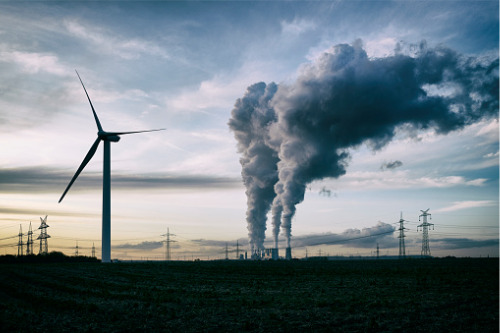

As New Zealand feels the impact of climate change with force, the public is increasingly looking for insurers, banks and governments to step up with plans for adaptation - however, many also expect insurers to keep covering increasingly uninsurable risks.
IAG New Zealand recently discussed the issue in its Climate Change Adaptation event, and executive manager, corporate relations, Bryce Davies noted that it has been active in this space for a long period of time.
It has been measuring its carbon footprint since 2004, and has been carbon neutral since 2012 - however, Davies said that the public is looking for more investment into research and preparedness, and while it wants the insurance sector to send price signals around levels of risk, it is “not comfortable” with the idea that it may withdraw from certain areas altogether.
“As New Zealand’s leading insurer, we protect over $650 billion of this country’s assets,” Davies said.
“That means one in every two homes, and that’s why we need to think about the impacts of climate change, because that’s a really core business issue for us.”
“Through that broad reach that we have, we understand that our role is to be a bit of a “shock absorber” between nature and our economy,” he explained.
“That means that we perhaps see climate change in a different way to other people. So, as important as it is to reduce our impacts on nature, it is equally important to reduce nature’s impact on us, and reduce the economic and social harm that it can cause to families and communities, which we see quite often within our business.”
“We found that there is a relatively consistent proportion of people who think that they will be personally impacted by climate change,” Davies said.
“Similarly, the physical impacts that climate change will bring continue to be well recognised - storms, droughts, fires, floods, etc. are all well anticipated, and remain at the heart of the challenges that we face.”
IAG recently released its 2021 climate change poll, and Davies said that the increase in severe weather events across the globe had clearly shaped public perception over the last year. However, he noted that there was still a reluctance to pay for any kind of adaptation strategy, with many being “uncomfortable” with the idea that insurers might pull away from covering certain risks.
“Some of our results have changed over the years, and that’s largely been because of real world events,” Davies said.
“We’ve had floods, droughts and water issues, and these all bring people’s attention to these issues. There’s a clear desire for more to be spent on avoiding and reducing these impacts, and for investment in science and infrastructure.
“But there’s not necessarily a clear desire to pay for it, and there’s a really unsurprising difference between what we want as individuals, what we expect to have to do, and what we expect of others.”
“Many think that insurers and lenders need to reflect the growing impact of climate change in their lending and underwriting decisions - the greater the risk, the higher the price,” he continued.
“But few are comfortable with the idea that the financial sector will withdraw completely when the risk gets too great. It seems that we like the signal that the pricing provides, but not seeing that signal through to its natural conclusion.
“I think this is where a bit of reality is important and should be injected into the conversation. There are some absolutes in climate change, even though there is massive uncertainty. We are in the business of risk, not certainty, so as risk becomes more certain, it becomes less insurable. And over time, it can become uninsurable.”
The past year saw the government introduce its Zero Carbon Act, and undertake a nationwide risk assessment of the climate change risk that exists in New Zealand.
Climate Change Minister James Shaw noted that this year has been focused on mitigation, whereas next year will focus on adaptation, and the government is now legally required to respond to the risk assessment with an adaptation plan which will be re-visited every six years.
He said that while there is a certain ‘fixed’ amount of damage, there is still a significant amount of adaptation that can be done to help New Zealand thrive if global temperature targets are not hit.
“In mitigation, you are aiming for the best outcome - to keep global temperatures to within 1.5 degrees above pre-industrial levels,” Shaw said. “With adaptation, you’re planning for the worst and asking ‘what if plan A doesn’t work?’”
“Given what we know about current projections, we think that is something between 2.8 to 3.6 degrees, and those numbers keep shifting,” he explained. “When you consider that we are already at 1.28 with only 0.22 degrees - a fifth of a degree - before we hit that 1.5 threshold, you have to say that the adaptation side of the equation has some urgency.”
“Even at 1.28, you can already see that there are consequences that are occurring,” he added.
“Some have been here in Aotearoa, but we haven’t been hit as badly as other parts of the world. We do need to get ahead of this, and with the kind of adaptive and risk-based planning that we are starting to develop, I think we will be able to navigate through these kinds of consequences that are already locked in to some extent.”
“The reality for some people in this country is that all of these risks will become a certainty,” Bryce Davies added. “That’s why banks, insurers and individuals all need to work together to manage that transition between what kind of cover might be available and affordable, through to something that may not be.”
